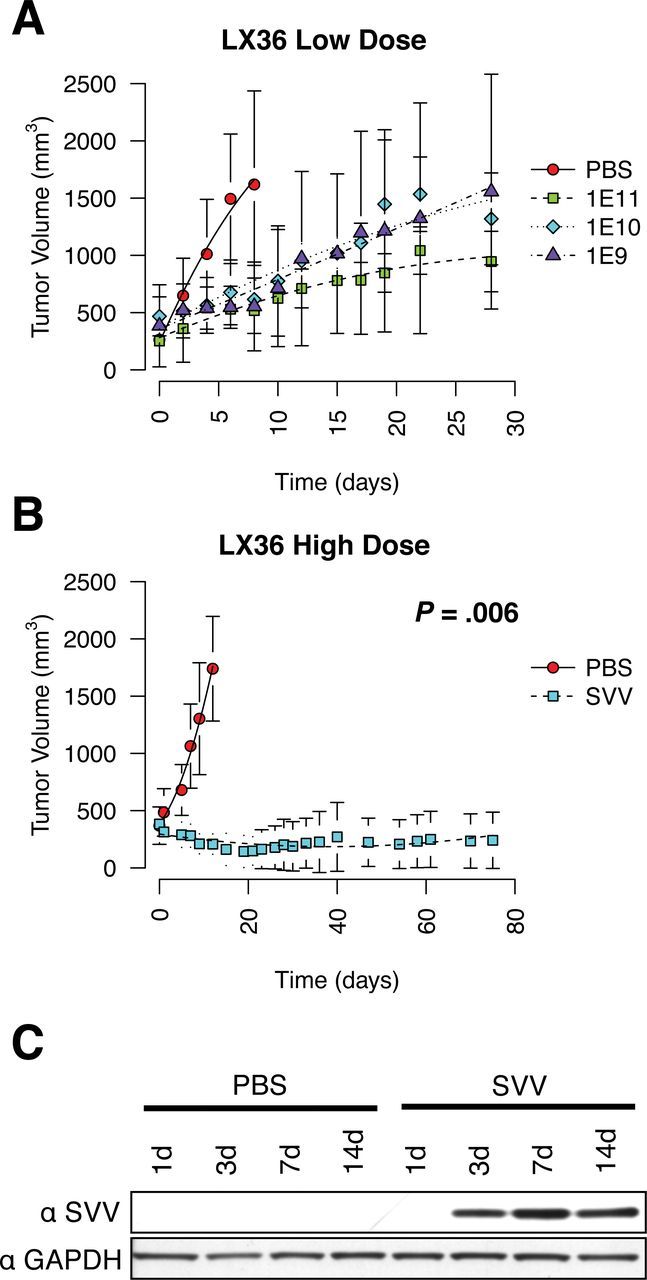Figure 3.

Dose modification of Seneca Valley virus (SVV-001) and time course of tumor growth in LX36 mice. LX36 xenografts were established in female CB-17 severe combined immunodeficient mice less than 24 weeks of age. Tumor data for each group are presented as mean tumor volume with variance summarized by standard deviation. Statistical significance was determined by two-sided unpaired Student t test at the final time point where survival was 100% for both groups. A) LX36 tumor-bearing mice were treated with either phosphate-buffered saline (PBS) or 1×1011, 1×1010, or 1×109 vp/kg of SVV-001 by single intraperitoneal injection on day 1 (n = 5 per group). B) LX36 mice were treated with either PBS or 1×1014 vp/kg (n = 6 per group). Two of six tumors were completely and durably eradicated whereas the remaining four tumors had a complete cytostatic effect. C) Western blot of pooled LX36 tumor lysates (n = 3 per time point) using rabbit hyperimmune serum generated against SVV-001 or glyceraldehyde 3-phosphate dehydrogenase (GAPDH). Cells were collected and lysed in radioimmunoprecipitation assay (RIPA) buffer containing complete protease inhibitors (Sigma) for 30 minutes on ice, then clarified by low-speed centrifugation. Protein extracts were quantitated by bicinchoninic acid assay (Pierce) and normalized using RIPA buffer. Protein extracts were resolved on a 10% Bis-Tris acrylamide gel with MOPS running buffer (Invitrogen) and transferred to a polyvinylidene difluoride membrane. Membranes were blotted with rabbit hyperimmune serum against SVV-001 or commercial primary antibodies against GAPDH (Santa Cruz Biosciences), and the V5 epitope tag (Invitrogen), and detected using horseradish peroxidase–conjugated secondary antibodies and chemiluminescence (GE Life Sciences).
